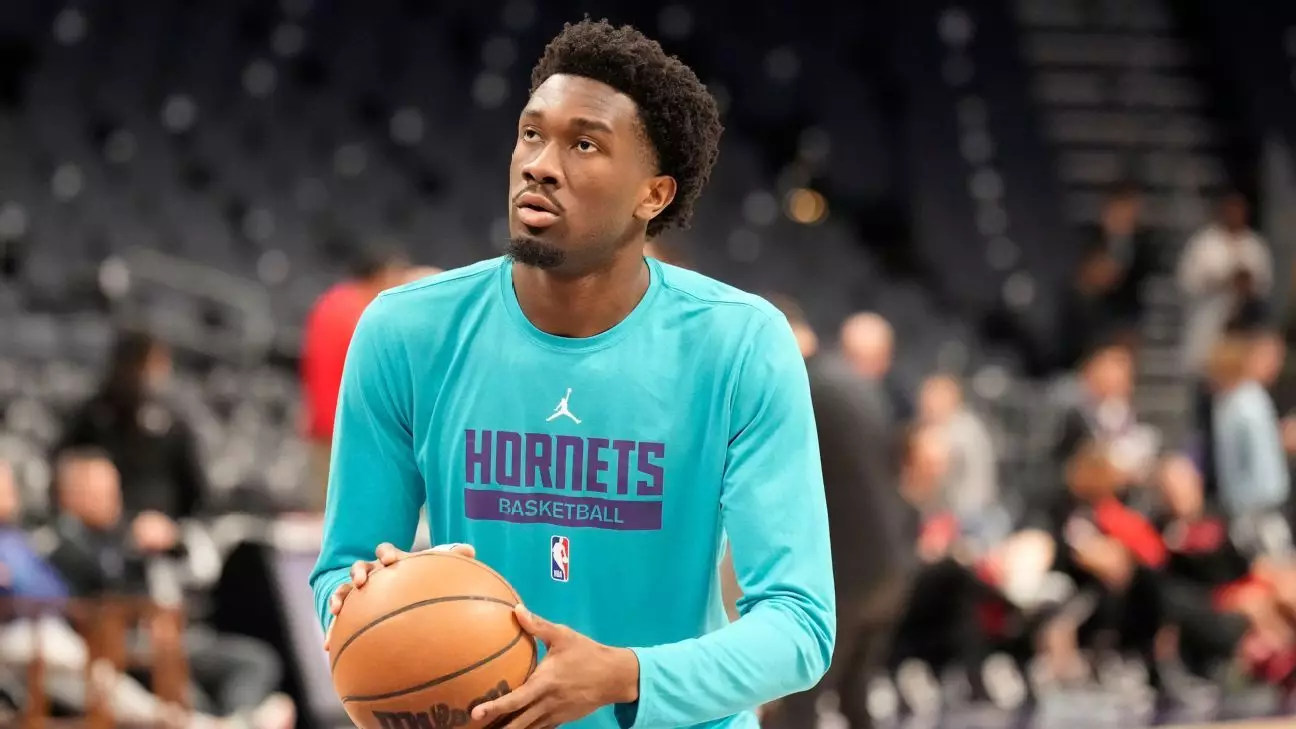The Los Angeles Lakers have made headlines this week, not just for the trades they executed but for the long-term vision they appear to be cultivating. With the acquisition of center Mark Williams from the Charlotte Hornets, the Lakers have effectively signaled their intentions to build around a younger core while still retaining a competitive edge. This trade is indicative of a significant shift in strategy for a franchise that has been steeped in tradition yet is now evolving to meet the demands of the current NBA landscape.
On the surface, this deal may seem like the Lakers traded two first-round picks and some roster depth for a 23-year-old center. However, a deeper analysis reveals that the transaction is rooted in a commitment to the future. While the Lakers have secured established talents in the past, the trend of acquiring younger, high-upside players is becoming increasingly vital in a league dominated by athleticism and versatility. Mark Williams, standing at 7 feet and weighing 240 pounds, embodies the type of mobile big man that modern offenses crave, especially when paired with players like Luka Doncic.
Doncic’s influence on this transaction cannot be overstated. Having communicated his preferences to team management, it’s clear the Lakers are not just assembling talent but curating a roster that maximizes their star player’s abilities. The synergy between Doncic and Williams could facilitate vertical spacing, enhancing offensive efficiency while providing the 40-year-old LeBron James with another reliable option in an aging roster.
In opting to part with promising young talents such as Dalton Knecht and Cam Reddish, the Lakers are making a calculated gamble. Knecht, the team’s 17th overall pick in the recent draft, showed significant potential with his shooting ability. Losing a rookie often comes with risk, especially when that rookie has already established a rapport with the coaching staff, including head coach JJ Redick, who saw potential in the young shooter. However, the Lakers seem confident that the infusion of experienced talent will outweigh the youthful exuberance they sent away.
Meanwhile, the departure of Anthony Davis, albeit significant, points towards a broader strategy focused on streamlining the roster around younger and more complementary pieces rather than holding onto aging stars whose contributions may be waning. This highlights a willingness to reset and adapt—a necessity in a league where gaps close swiftly.
Despite the optimism surrounding Williams, it is prudent to consider his track record regarding injuries. Throughout his tenure with the Hornets, Williams has struggled to stay on the court, participating in just 39.6% of games since entering the league. While the Lakers are reportedly confident in his medical evaluations, the fact remains that bouts of unavailability can hamper even the most talented players. The Lakers’ front office must thoroughly monitor his health and ensure that they are making a wise investment, especially given their aggressive approach at the trade deadline.
An additional layer to consider is the Lakers’ newfound roster flexibility. By trading for Williams and consolidating their assets, they have opened avenues to explore the buyout market, focusing on adding either playmaking ability or 3-point shooting. The departure of Knecht could also lead to expanded roles for other shooters within the lineup, allowing for a more diversified offensive strategy as they chase a championship caliber performance.
In an era where continuity is paramount, the Lakers are not just chasing immediate success. They are laying the groundwork for a more sustainable and versatile roster that can adapt to the evolving game. The trade for Mark Williams is not merely a reaction; rather, it is a strategic alignment with a future-centric vision—a hallmark of teams that succeed over the long haul in the intricate machinery of the NBA.
The Lakers’ recent moves reflect an organization willing to pivot and adapt amid the growing reliance on young talent. By solidifying their roster with strategic acquisitions, they are poised not only for a shot at the title now but for lasting competitiveness in the years to come.


Leave a Reply